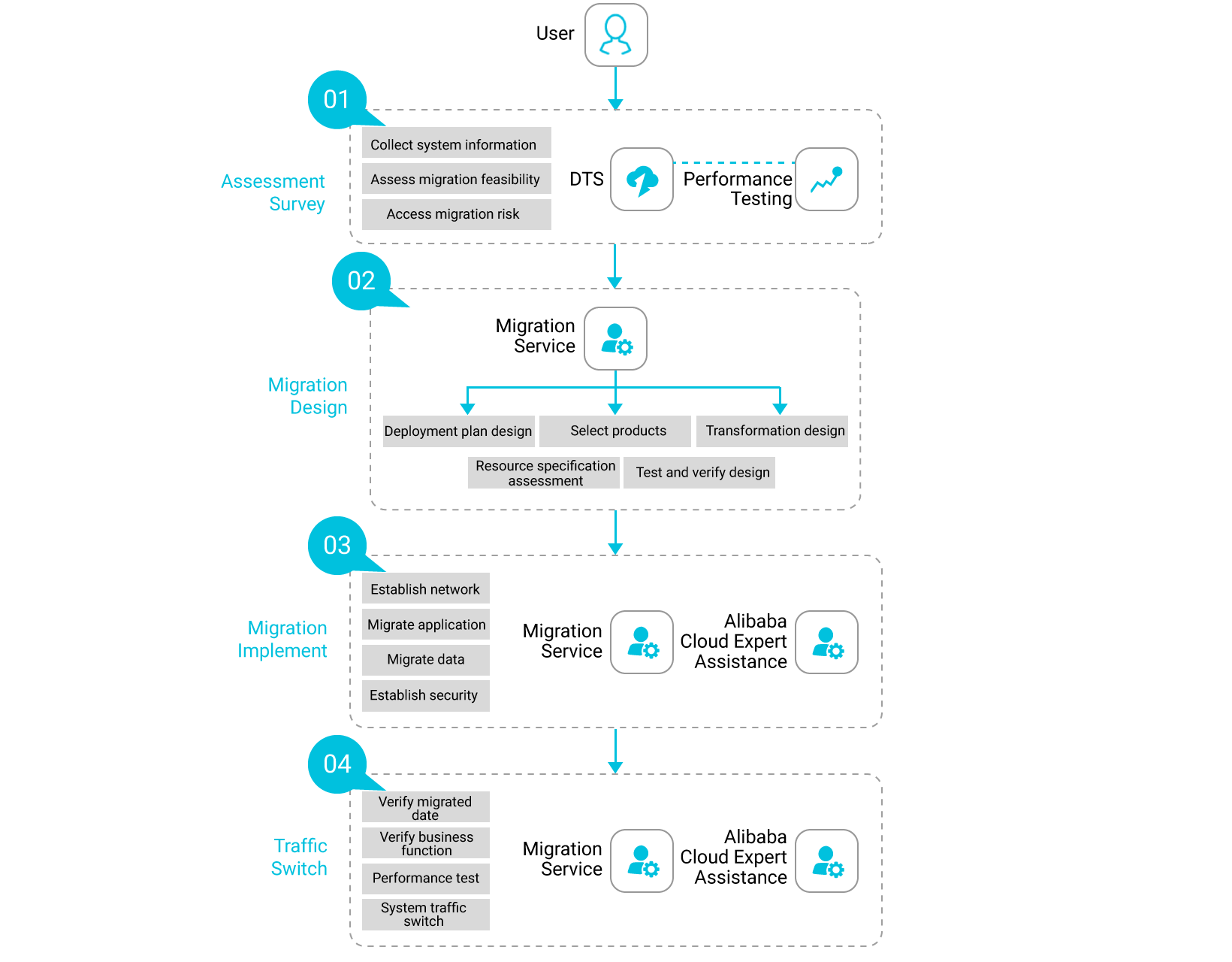Background
To determine whether a business system is suitable for migration to the cloud, a preliminary evaluation is first required based on the workload and positioning of the business. This includes tolerance to maximum downtime, current or potential fault risks, and the compatibility of the current system to migrate to the target cloud platform.
Solution Architecture
- Cloud migration can be typically divided into four stages: System Assessment (capacity planning), Migration Design, Migration Implementation, and Traffic Switch (cutover stage).
- System Assessment: This stage entails research into the entire migration project, including research of the application's system architecture, database information, overall system demands, underlying system deployment, and business software dependencies. In particular, research will focus on whether the system has any traditional or industry-specific equipment and software. Via capacity planning, users can initially assess the system’s compatibility to running on the cloud and potential challenges involved with migration to a cloud platform. The assessment analysis stage should also include risk assessment.
- Migration Design: Based on the previous research, and in combination with the design of the cloud platform, the application system generates a new system architecture and transformation plan for migration. This includes whether to migrate the system to the cloud directly, or after transformation, and whether to perform de-O adaptation or whether to use distributed DRDS.
- Migration Implementation: As the cloud platform and traditional IT environment are different, before the new system goes live, users must perform full functional verification and performance testing on the cloud platform.
- Traffic Switch: The system cutover stage involves switching the system traffic to the target cloud platform. During the migration implementation process, the system cutover not only involves switching the system traffic to the cloud platform, but also includes prior preparation, such as preparation of cloud product resources, database migration, and application migration.
- After traffic has been successfully switched to the cloud platform, the system will officially enter the next stage of Operations & Management.
- Should you have any technical questions post delivery, you may submit a ticket at any time to Alibaba Cloud's professional After-sales Team for support.
Highlights
- Standardized migration methodology
- Reduced risk of data loss
Key Products and Services
Related Products
Data Transmission Service
Homogeneous and heterogeneous data migration between data storage systems, such as SQL, NoSQL, and OLAP.
Elastic Compute Service
Stay flexible and reactive to the real time needs of your business with reliable, scalable and on-demand compute capacity on the cloud.
Object Storage Service
Easy to use cloud storage that allows you to process and handle millions of requests per second.
ApsaraDB for RDS
An on-demand cloud database service with automated monitoring, backup and disaster recovery capabilities.





